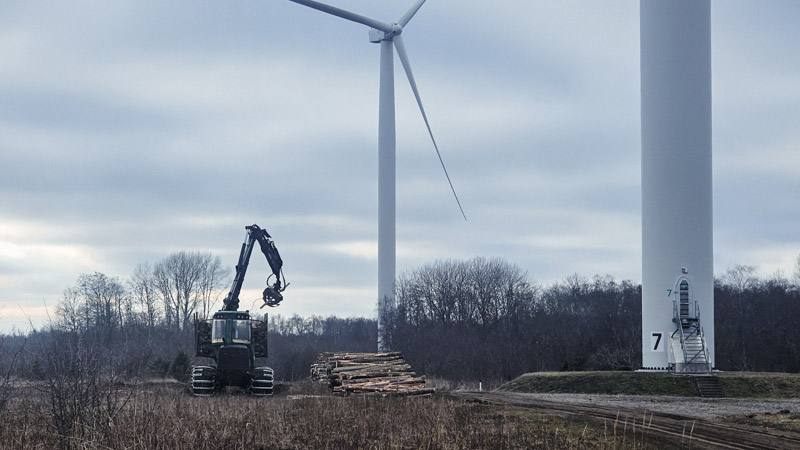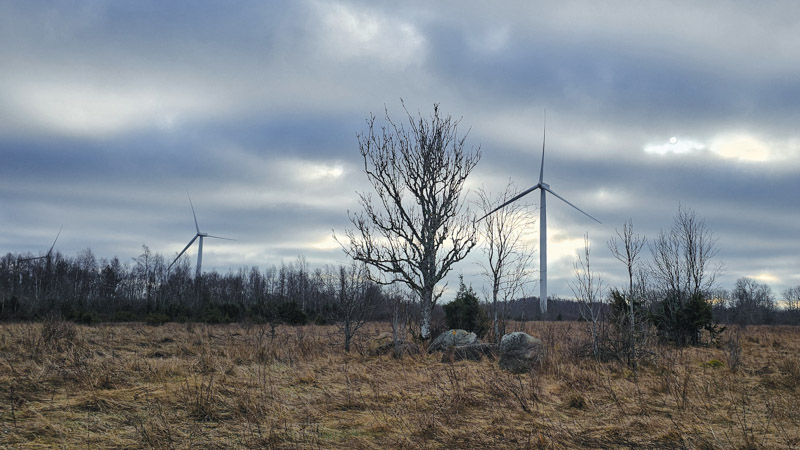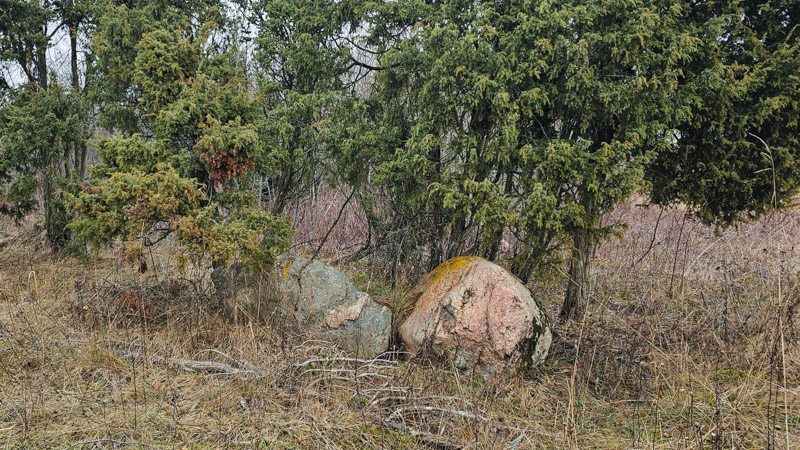- Accidents and Incidents
- Posts
- How to rate a rock.
How to rate a rock.
There is a rock in the middle of the Pakri Peninsula that is rated five stars.
This weekend, Estonia disconnected from the Russian power grid and switched to “island mode”.
My friend, Laurel Amberdine, is gone.
These are the pieces I have, the corner pieces of a puzzle without a box, without a guide. I don’t know how they fit together.
We have been plotting our escape from the Russian power grid for over a decade; plans put into place in 2014 after the annexation of Crimea. We stopped buying Russian energy in 2022 when they attacked Ukraine. Synchronising to a new grid is a little more complicated. Estonia disconnected from the Russian system yesterday and now the Baltic States are a tiny self-sufficient power island, holding our breath to see if we can make it.
I told Laurel about the rock months ago, spotting it when I zoomed in on Google Maps searching for traces of the farms and settlements that used to cover this peninsula, before the Baltic Port into a nuclear submarine training center for the Soviet Navy.
And there it was in the middle of nowhere: a rock with six five-star ratings and two reviews.
Laurel had questions. Who would review a rock? And what does a rock have to do to deserve five stars? We agreed that I should pilgrimage to the rock and report back.
I didn’t know she was running out of time.
The price of electricity has skyrocketed. The Ministry of Climate, whom I have never heard of before this day, wants us to know that it is not the result of disconnecting from the Russian grid. We are reliant on our own energy, especially wind energy, and when the wind dies down, the price goes up.
I can see the Pakri wind farm from my living room window, a cluster of tall white wind turbines spread across the northeast horizon. There is no wind. None of the blades are turning.
The five-star rock is somewhere in the middle of the wind farm.
I put on angry music and stomp out into the freezing weather. It’s too late for Laurel but the least I can do is go out and find the goddamn rock.
It’s a forty-minute walk until I reach a row of rocks blocking the dirty road into the wind park. The rocks are not mentioned on Google Maps. Neither is the dirt road.
The frozen mud crunches beneath my boots. The wind turbines loom over me like silent giants. Usually, even from a distance, I hear the beating heart of the whoosh of the turning blades. Now I am in the middle of the wind park and there is just silence. Nothing moves. The wind is perfectly still, holding its breath.
Every time I pass a rock, I check Google maps to see if there is any mention, but all of these rocks are unmarked and unrated.

I noticed that Laurel had been quiet lately, not chatting as much, not telling me about what she was doing or how things were going. She didn’t like to talk about her health, so I accepted what she told me and didn’t ask questions when she stopped telling me. I thought maybe she was writing again after a fallow period, and I didn’t want to shine a bright light on her words before she was ready. When I reread our messages, my silence appears callous, a lack of interest. Rarely did I simply ask her how she was.
For fifty years, the Soviet military kept the city here locked down, literally surrounded by barbed wire. The peninsula became rewilded, covered with scraggy woods of alder and birch. It is on this vacant land that the wind farm is built.
The ground shudders. A massive piece of heavy machinery, exactly the kind of thing I envision when my cold and flu pills warn me not to operate any, rolls across the vacant land.

A mechanical arm reaches down like a claw machine at an arcade, picking up a felled tree and dropping it into the back. It crosses my path and I glance up at the driver, not sure whether to wave or not. He steadfastly avoids looking in my direction. Maybe I’m not supposed to be here, traipsing through the wind park.
I continue, stopping to take a photograph of another undocumented rock. The forestry machine dumps the full-sized trees one by one into a pile by Wind Turbine Number Seven.
Two Dutch F-35s fly overhead. Communications with Russia have been described as “polite” but Russian diplomats predicted chaos and tears if we left the grid, a petulant tone reminiscent of a bad breakup. You’ll be sorry. I hope that the NATO jets are just running routine patrols, ensuring they are visible during this vulnerable transition. A shiver crawls up my back.

The jet-engine roar fades and the dystopian stillness of the wind farm returns. I am Don Quixote, tilting at windmills, except that I don’t have a squire or even a horse. Just me and the wind turbines and the undocumented rocks.
I glance down at the map to check another set of undocumented rocks. I’m close to the pin now, turning onto a dirt road at Wind Turbine Number 13.
A few minutes later I see it. Perched on the side of the road is …a rock.

I expected more.
I mean, it is a pretty rock, a fetching pink granite lump with a touch of moss on top. But five stars? I lay my hand on the rock and imagine telling Laurel how it felt. I make up stories of lay lines and vibrating frequencies. I’m at a loss as to why people would have rated this rock and not the other rocks. I pull out my phone to read the reviews. That is when I realize that I’m at the wrong rock. I have lost my way. Laurel would not be surprised.
Laurel was a big deal in the speculative fiction world and an editor has asked me to write something about her as a part of a memorial. This acknowledgment of our friendship feels like a tiny band-aid on my broken heart. Laurel would make a fuss about it; proud that I’d been solicited to write something. But I don’t know how to find the right words. I am desperately frightened of disappointing her. If anyone could find a way to read and rate her own obituary, it’d be Laurel.
Lithuania detached from Kaliningrad and Belarus several hours before we turned off our link to Russia. They are now working to establish a connection to Poland, which will synch our power island to the Continental European grid. At that point, the final ties with Russia will be severed.
At some point when I was checking the map, I must have pinned the wrong spot. This pin says it is a monument, a monument with no star ratings and no reviews. Machine translation tells that the monument consists of the Four Erratic Boulders of Neosti, boulders carried and dropped here by glaciers, probably, but possibly by giants, if you prefer Estonian folklore. I apologize to the boulder for calling it a rock and look for the others.

I find five in total, leaving me with more questions than answers. I can’t tell which of the boulders were the four meant by the person who added it to the map. Whoever it was could not be bothered to leave a review or even a star rating.
However, I’m now very close to the five-star exemplar. Google advises me to leave the road and walk across the open land for four minutes, a broken line demarking that it isn’t actually sure that I can get through.
I look at the frozen foliage and mutter something angrily as I stomp through, frozen long grass splintering beneath my boots. A crow caws in the distance, wondering what on earth I’m up to.

When I next glance up, the five-star boulder is unmistakable. A solid slab of rock looms over the alder. I have had apartments smaller than this boulder.
The sun peeks out of the clouds as I approach, highlighting the craggy grey and pink surface with mossy veins crawling up the side. The boulder — no one would call this a rock, not even me — feels alive and watchful. As I approach, I feel bad that I ever questioned it. Especially as all it would have to do is tip slightly and it could crush me, flat as a bug, and no one would ever even know that I had been there.
Nine wind turbines stand sentinel, deathly silent giants. I walk around the circumference, taking the risk of the vengeful boulder tipping onto me.
On Google, there is a picture of a good-looking couple sitting on top, smiling in the sunshine. Maybe here at the boulder there is always sunshine. But now, the low clouds quickly close over again, hovering above the stationary blades in the distance.
Even if I knew how to climb the vertical surface, there is no one to stay behind and take my photograph.
It’s all twisted together in my head: Laurel’s death, the Baltic energy island, the petty spiteful comments by the Russians, the wind turbines standing in silence, waiting for their chance to do something, to be important, to save us.
I try for a selfie, a photograph of me standing in front of the rock, smiling at Laurel, ready to send to her silent chat window.
My phone goes dim and then turns itself off.
My angry music is gone. I have no map and no selfie and no friend. It’s just me and the boulder and the wind turbines. We stand in the stillness, disconnected.
I stomp off without another look at the boulder, full of regrets and rage. I follow a dirt track which seems to lead in the right direction but then it dead ends at Wind Turbine Number 12. I sit in the dirt, defeated.
I’m not really lost. I just need to walk to where the wind turbines aren’t. I’m just tired. I’m just not sure what I’m even doing here.
The cold seeps up through my jeans. I get up. In the distance, an old brick chimney from the abandoned Soviet training center marks the road which will take me home.
That’s when I hear it: a barely audible rumbling sound from Number 12, like a small child sitting on the porch and humming to itself.
“Hey,” I say. My voice sounds strange. There’s no one around to witness me approaching a wind turbine with my hand outstretched as if calming a wild animal.
“It’s going to be all right,” I tell the wind turbine. “It’s going to be all right.”
The wind picks up and the blades begin to spin.
It’s going to be all right.